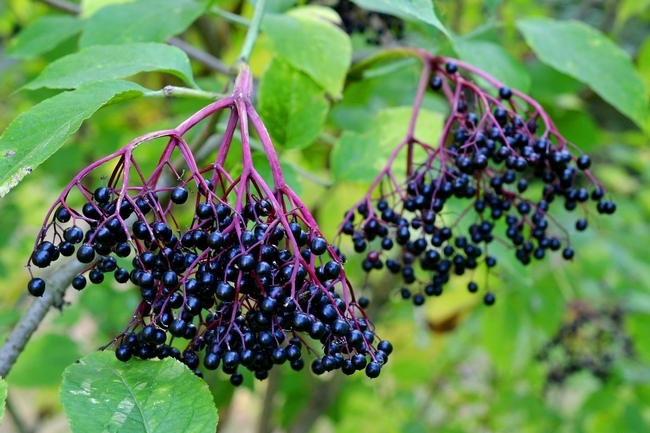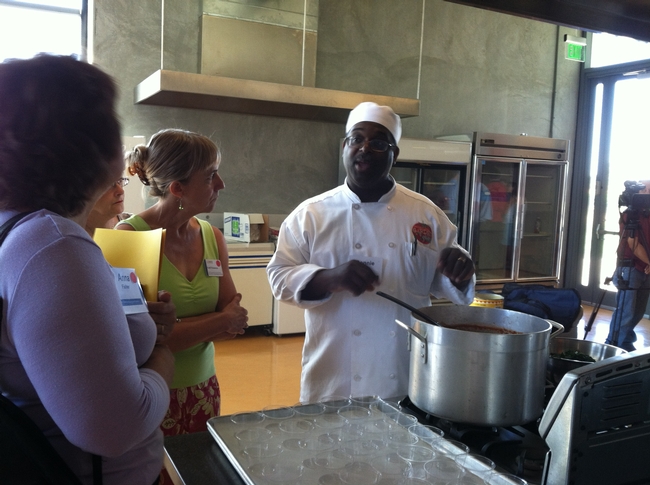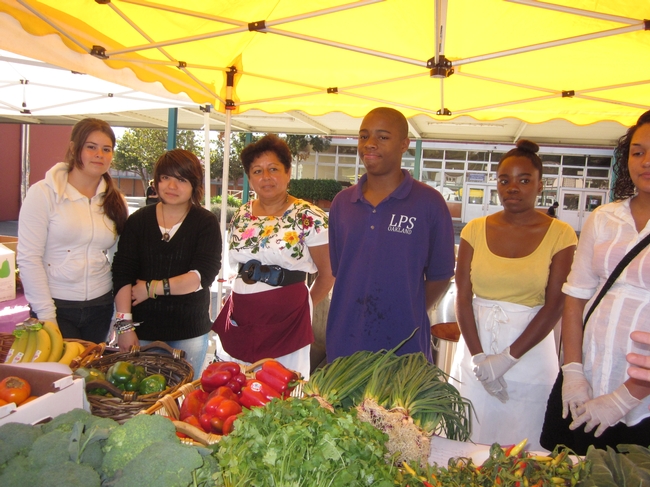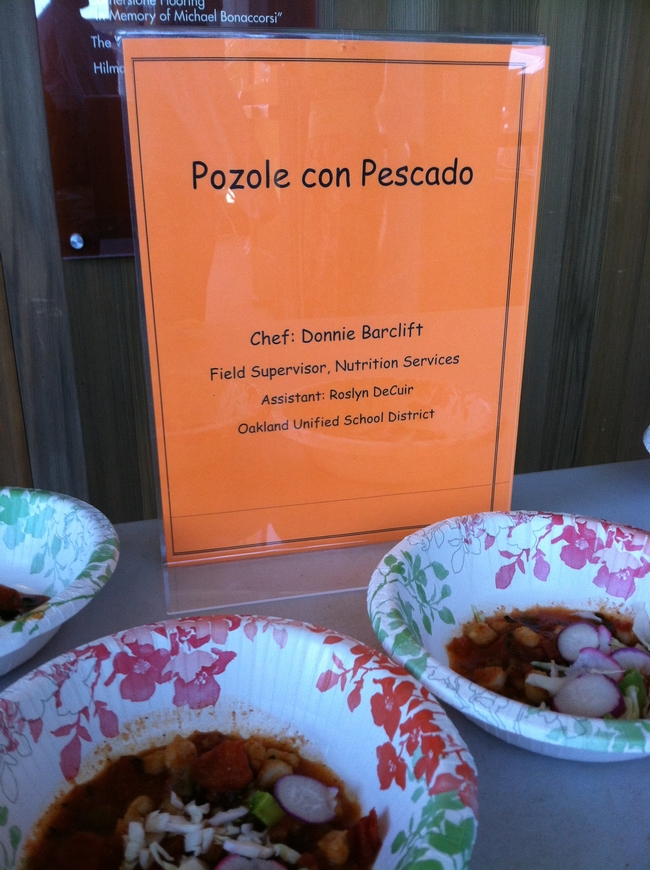Posts Tagged: Sustainable Agriculture Research and Education Program
UC ANR expands role and reach of its sustainable agriculture program
UC Agriculture and Natural Resources) will be welcoming the Sustainable Agriculture Research and Education Program (SAREP) back to its direct oversight effective July 1, 2020.
“This change in management will enable closer collaboration between SAREP and the other statewide programs and institutes administered by UC ANR, while also expanding our current affiliation with the UC Davis College of Agricultural and Environmental Sciences (CAES) to other campuses and partners,” said Glenda Humiston, University of California vice president for agriculture and natural resources.
Humiston also announced that Gail Feenstra, who has been serving as acting director since October 2019, has been appointed director of SAREP, effective July 1, 2020.
Since 1986, SAREP has supported scientific research and education to advance agricultural and food systems that are economically viable, sustain beneficial ecosystem services, and enhance the quality of life in local communities. Moving forward, California farms and food systems face an ever-larger set of challenges: shifting consumer demands,invasive pests, climate change, additional regulations, lack of access to labor, and more. The need for new technologies, better systems and effective problem-solving is greater than ever.
“UC ANR envisions positioning SAREP to serve as a much broader umbrella of sustainability, addressing all aspects of the triple-bottom-line: people, planet and prosperity,” Humiston said. “To accomplish this, SAREP will provide leadership and support to several promising initiatives and will facilitate our ability to capture synergies among them. Those include agritourism, ecosystem services, regional food systems, community and economic development and more.”
Judith Redmond of Full Belly Farm said, “The SAREP program provides an opportunity for UC scientists and researchers to integrate their attention across the disciplines of social science, environmental science, and agricultural economics. The challenges facing down California's farmers and farmworkers today demand no less — those challenges are converging from different directions and should not be addressed without attention to long-term sustainability.”
In addition to working with farmers, SAREP partners with community organizations including the Community Alliance with Family Farmers (CAFF) and the California Climate and Agriculture Network (CalCAN), a statewide network of sustainable farmers and ranchers and allied organizations, agricultural professionals, scientists and advocates.
“The UC SAREP program was a groundbreaking effort to bring the research and education needs of organic and conservation-oriented agriculture to the foreground within our University of California system,” said Jeanne Merrill, CalCAN policy director. “By bringing SAREP back to UC ANR, we hope to see that program flourish as a statewide program that addresses the latest needs of farmers and the environment, including agricultural solutions to climate change.”
CAFF executive director Paul Towers said, “SAREP's next chapter is exciting, strengthening sustainable agriculture research and more deeply connecting it to farmer needs across the state. Achieving our shared vision of a fair and resilient food and farming system is no small feat. So it's great to have an initiative focused on connecting the dots.”
Feenstra, who joined SAREP's staff as a writer in 1989, has spent her career encouraging interdisciplinary research and outreach that span the supply chain from farm to fork. She helped to initiate UC ANR's work in farm-to-school research and extension and was one of the first researchers with her SAREP team to evaluate farm-to-school procurement data rigorously. From projects that focus on small and mid-scale farms to food hubs to food systems assessments to food policy councils, Feenstra is interested in uncovering the economic development potential of coordinated supply-chain stakeholders and opportunities for building relationships between farmers, consumers and communities.
“I am excited to be part of a stellar SAREP team working more closely with UC ANR colleagues and community partners on strengthening resiliency of regional food systems and supporting economic and social justice for all people – from farmers and farmworkers to food system workers to consumers,” Feenstra said.
Feenstra earned an Ed.D. in nutrition education from Teachers College, Columbia University in New York City, and a B.S. in dietetics and nutrition from UC Davis.
“Our sincere thanks go to UC Davis CAES and Tom Tomich, who has served as SAREP director since 2007, for their leadership and support of the program,” Humiston said.
As part of the transition, the SAREP team will relocate from the UC Davis campus to the UC ANR building at 2801 Second Street in Davis, Calif. The move is planned to be completed by July 1, although timing may be impacted by ongoing shelter-in-place orders.
Farm to school programs increase children's access to fresh, seasonal produce
Farm to school programs increase children's access to fresh, seasonal produce
Eating more locally grown food could improve the health of students and the local economy
If kids are introduced to fruits and vegetables at school, will they be more likely to choose to eat produce on an ongoing basis? That's the hope of University of California researchers who studied schools that served meals prepared with local produce.
The dramatic rise of obesity and diabetes in children has prompted nutrition experts to encourage parents to offer their children a more healthful diet with more produce. Yet fewer than 10 percent of California children consume the minimum recommended daily servings of fruits and vegetables, according to a 2009 report by the Centers for Disease Control and Prevention.
"School nutrition program directors are in the driver's seat. They're already making good decisions about changing school food across their districts," said Gail Feenstra, food systems analyst for the University of California's Sustainable Agriculture Research and Education Program, who led the study. "We wanted to bring the resources of the university to bear and help them move forward."
For this three-year project, the UC researchers worked with three school districts: Oakland Unified School District, Winters Joint Unified School District (west of Sacramento) and Enterprise Elementary School District in Redding.
"The objective was to connect regional growers with school lunch programs so they could buy more fresh seasonal regional food for the school meal program," Feenstra said. "To encourage school gardening, we provided professional development for the school nutrition program directors, teachers, parents and others. We also measured kids' consumption of fresh seasonal regional food and their preferences for fresh vegetables."
The results have been positive: all three districts increased their purchases of fresh, seasonal, local produce. The definition of "local" varies depending on the location of the school district and time of year, but is generally within a 250-mile radius. Much of the success is due to the creativity of school chefs in modifying their purchasing practices and making delicious meals from the fresh produce.
Oakland Unified chef Donnie Barclift won an award from celebrity chef Rachael Ray for his recipe for pozole con pescado, a zesty tomato-based soup filled with fish and vegetables.
"I take great pride in the work we are doing to integrate into our menus, not just fresh, but fresh local seasonal produce," said Barclift. "It's also important that we are teaching kids where their food comes from and the importance of fresh produce in their daily diets. It's wonderful to get food fresh from a farm instead of a factory."
Oakland Unified School District spent $794,000 on produce the first year, of which 11 percent was local. In the final year, Oakland's total produce purchases increased to $1.36 million with 31 percent locally sourced. Winters Joint Unified School District's produce purchases leaped from $7,707 and 6.6 percent local to $43,000 and 51 percent local. Enterprise Elementary School District doubled its produce spending from $89,000 and 4.4 percent local to $177,000 and 20 percent local.
During the three-year project, student participation in Oakland's school meal program increased by 17 percent. Oakland doubled the number of its farmstands on the school grounds from 12 to 25 schools, involving more parents and community members and increasing students' access to fresh produce. The school district also created a district-specific branding of its farm to school program: Oakland Eats Garden Fresh. To ensure the program continues, OUSD has hired a full time Farm to School coordinator.
In Winters, students more than doubled their consumption of fruit and total produce. Rominger Middle School planted a new school garden that is contributing to students learning about growing their own food. WJUSD students' parents reported a significant increase in their children's consumption of kiwi fruit at home and a slight increase in overall consumption of vegetables.
Students were asked to identify, taste and rate fresh, raw produce such as asparagus, cucumber, bell pepper, cabbage and kiwi fruit. Overall, the students improved their ability to identify the selected fruit and vegetables. Students reported that they would ask a family member to purchase spinach and bell pepper and that they would eat them as a snack.
"We were excited to learn that the students exposed to this program were able to identify new types of produce and that they would ask their families to purchase these items at home. This is an important step towards increasing children's consumption of fruits and vegetables," said Sheri Zidenberg-Cherr, UC Cooperative Extension specialist in the Department of Nutrition and co-director of the Center for Nutrition in Schools at UC Davis
Each school district has reaped other benefits from the project. Oakland developed a new bid process for buying produce to specify that products had to come from local farms and was able to increase local produce purchases by 40 percent.
In Winters, parents, farmers and others formed a nonprofit farm to school organization to raise money so the school district can continue the farm to school efforts. The money will help buy fresh local produce, support school gardens and fund other related activities.
In Redding, a grower began acting as an aggregator, delivering local produce from several local farms to the school district's kitchen so the school could work with one supplier and write a single check. Enterprise Elementary School District has also added nutrition education to the professional development offered to its staff.
UC Agriculture and Natural Resources has awarded Zidenberg-Cherr's research group a grant to work on the "Shaping Healthy Choices Program" with two other school districts – Elk Grove Unified School District in Sacramento County and Sylvan Union School District in Stanislaus County. They are studying how a multi-component program that includes classroom nutrition education, family and community participation, regional produce procurement, nutrition services and school gardening can influence students' food choices, critical thinking skills and health-related outcomes. This is a highly collaborative project that relies on expertise from the Department of Nutrition, Human Ecology, Population Health and Reproduction at UC Davis, the UC Davis Agricultural Sustainability Institute, UC Davis Betty Irene Moore School of Nursing and UC Cooperative Extension in Sacramento and Stanislaus counties. The UC researchers are working with school staff and school wellness committee members to ensure the schools will be able to continue the Shaping Healthy Choices Program on their own.
Feenstra sees the key to encouraging children to eat fruits and vegetables throughout their lives as requiring more than putting the produce on their plates at school. Enticing them to try new items, getting them interested in growing food in gardens, teaching them about nutrition and involving their parents all play important roles in the learning process, she said.
"Since Cooperative Extension is a part of so many different counties, as we move forward in farm to school, I think that making sure that we involve Cooperative Extension and the nutrition education component in addition to school gardening and procurement is a really important way to think comprehensively about where we need to go next," Feenstra said.
In addition to improving children's access to fresh, seasonal produce, farm to school programs provide new markets for regional farmers.
This farm to school study was funded by a grant from the California Department of Food and Agriculture Specialty Crop Block Grant Program.
Prize-winning recipe created by Donnie Barclift, Oakland Unified School District chef
Pozole con Pescado
Servings: 50 one-cup servings
Raw Atlantic Pollock. As an option, you may use other types of fish such as cod or tilapia.
1. Coat baking pan with oil or melted butter.
2. Lay filets in baking pan.
3. Combine the garlic and chili powder and cumin.
4. Lightly sprinkle seasoning blend on filets and bake until done in a pre-heated 350 degree oven (about 5 to 7 minutes).
5. Once done, allow fish to sit for five minutes then cut into chunks, about 1-inch cubes.
1. Saute celery and onions in 4 TBSP olive oil until onions are translucent.
1.5 cups celery, chopped
1.5 cups onion, fresh, diced
2. Combine the sauteed onion and celery with the ingredients below in a soup pot and bring to a simmer for 20 minutes, stirring occasionally.
2 #10 can tomatoes, crushed
1 #10 can + 5 cups yellow hominy (undrained)
14 oz diced green chilis
3/4 cup chili powder
3 TBSP garlic, granulated
2 TBSP cumin
1 TBSP cayenne pepper, ground
1/2 tsp ground black pepper
3. Add kale during the last 10 minutes
4. Wash and shred the cabbage. Serve 1/8 cup on top of soup for garnish.
1.5 lb cabbage, fresh, raw, chopped
Serving the pozole:
To insure proper fish portioning, portion 1 cup of the soup into a serving bowl, then float 1 ounce of fish chunks on the soup. Serve with warm, whole-grain flat bread or another bread item that equals 1 grain bread. Half of a 6-inch whole grain flat bread is the portion. Heat in a warmer, cut into quarters before serving and serve 2 quarters of bread per bowl of pozole.





